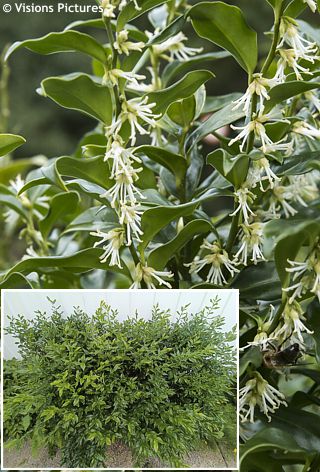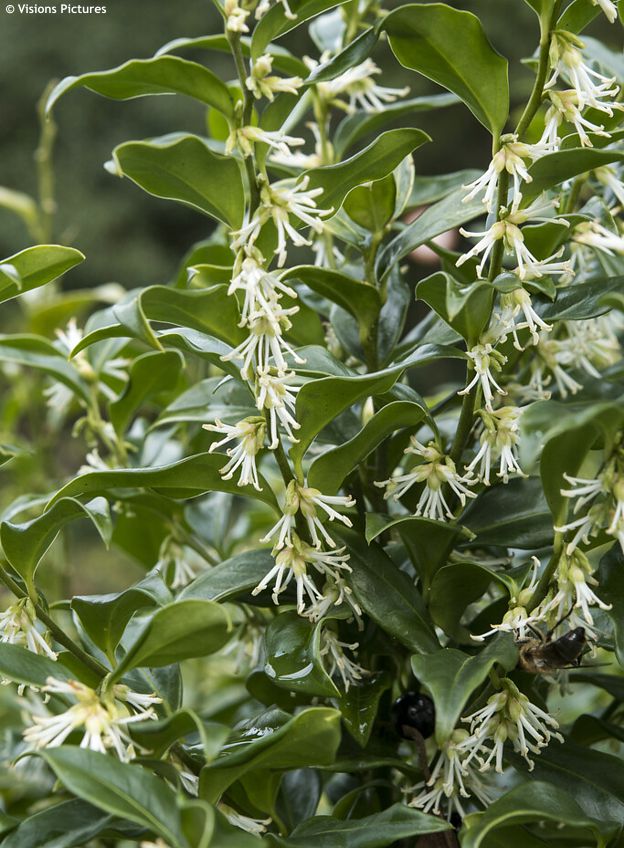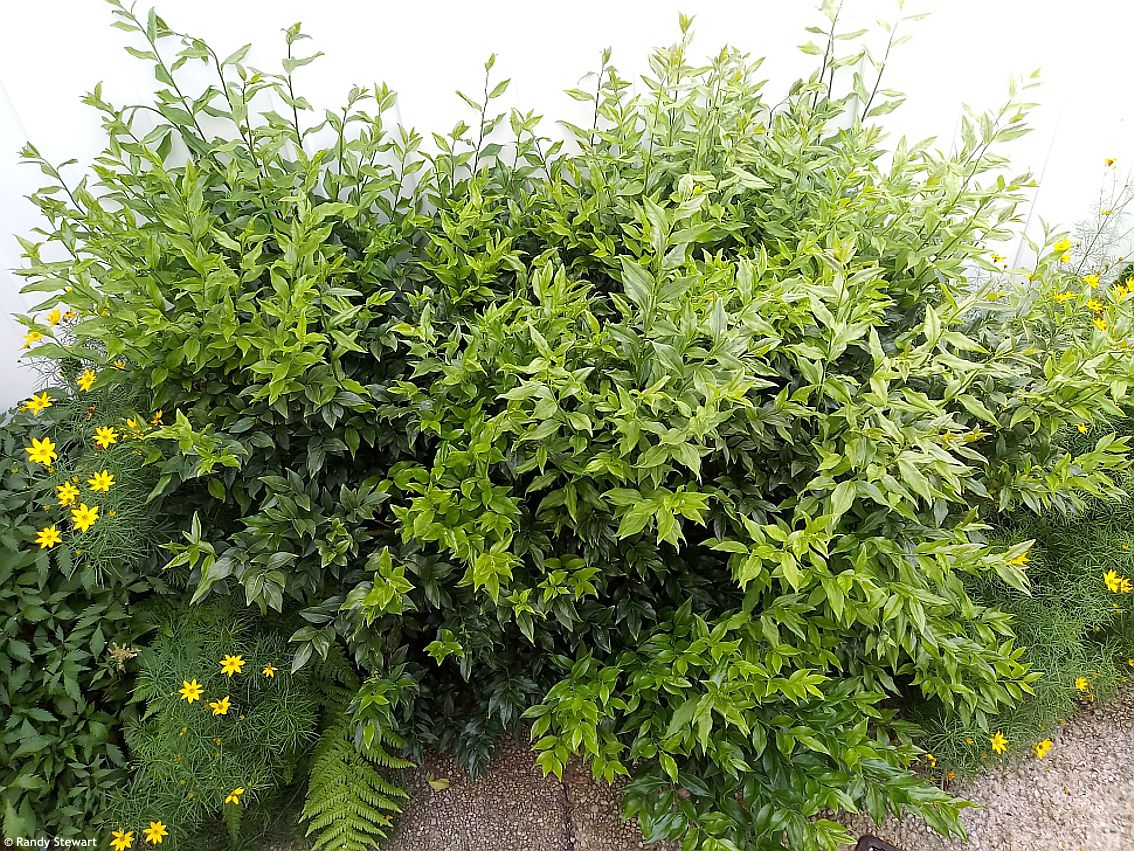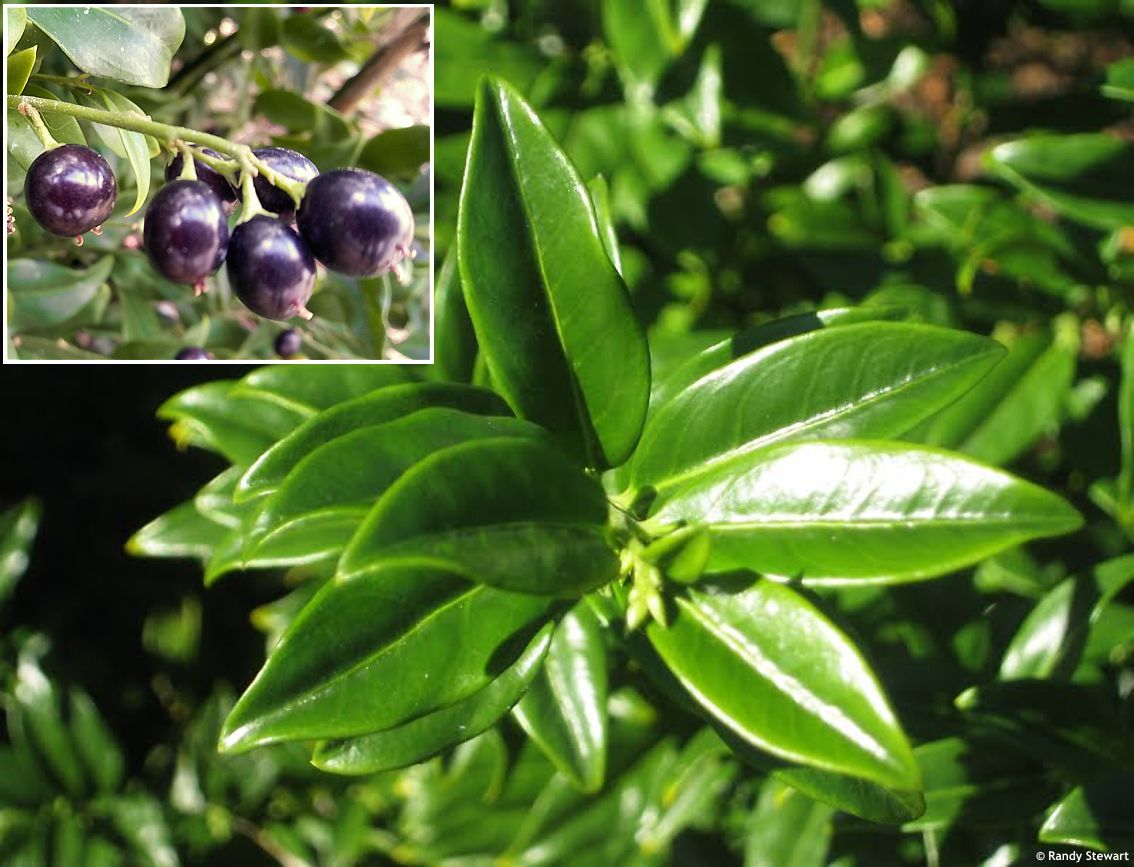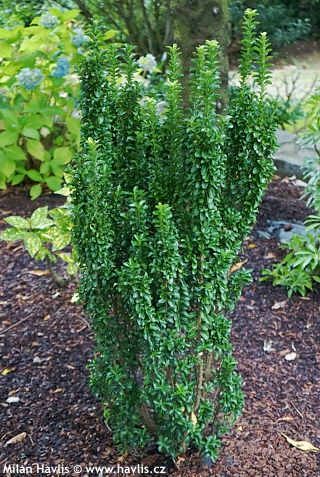Sarcococca confusa sweet box
Sarcococca
Sweet box is an Asian taxon of low to mid-sized, evergreen shrubs native to a large area from Afghanistan to the Himalayas and N.E. China. It is from the same family as box plant and even though they were supposed to be tender for C.E. climate, the fact than some species are present at the foot of the Himalayas encourages the breeders from colder areas to spend more time on their hybridizing.
This sweet box is believed to have come from western China where it probably originated as a natural hybrid of two species. Nowadays, you will not find it in the wild either because it is extinct or perhaps it never existed as a botanical species. Very interesting is a fact that there are no varieties since its seedlings are always identical to the parent.
Compared to other sweet box species, s. confusa features shorter but wider leaves and upright growth. The leaves are evergreen, leathery, fresh green, rippled, 5-6 cm long, 3-4 cm wide, and very glossy. From the second half of winter, as soon as temperatures rise above zero for several days in a row, a profusion of small, fringed, white flowers begin to open. They are likely the most fragrant of all species and withstand a few degrees below zero at night. Their perfume is sweet, a blend of vanilla and honey, and very strong when a mass of plants is blooming. In summer female flowers produce small, fleshy, neither edible nor poisonous, dark maroon fruits which turn almost black when fully ripe.
Confusa sweet box grows moderately fast (usually abt. 20-30 cm per year or twice as much in good soil) and make upright, green stems which branch out in the following year. As they gain volume and weight, they bend slightly, but do not arch. In maturity you can expect a dense and bushy shrub about 1.5 m tall and wide. It is often used as an evergreen, shrubby undergrowth of taller trees with bare trunks, an evergreen filler in shady corners, or a small specimen shrub in front yards with limited space where, due to the absence of sun and often water, nothing else thrives. Once established it withstands long periods of drought.
Sweet box usually does not need pruning to look good but may be gently sheared immediately after flowering. It spreads by suckers to form dense colonies unless the ground is covered with mulching sheets. If you want to grow it in full sun (not recommended) provide regular watering and get ready for some burnt tops after harsh winters.
Sweet box is commonly used as a ground cover or filler in semi-shaded or shaded locations where it is protected from strong winter sunlight and cutting winds. It will grow in almost any well-drained soil but performs best in acidic to neutral, humus-rich, evenly moist soil. It thrives on neglect and once established it requires no care. Mulching helps retain moisture and reduces temperature swings in winter. It is hardy to abt. -24 °C (USDA zone 6) and is under further trials in colder zones.
Last update 06-03-2023
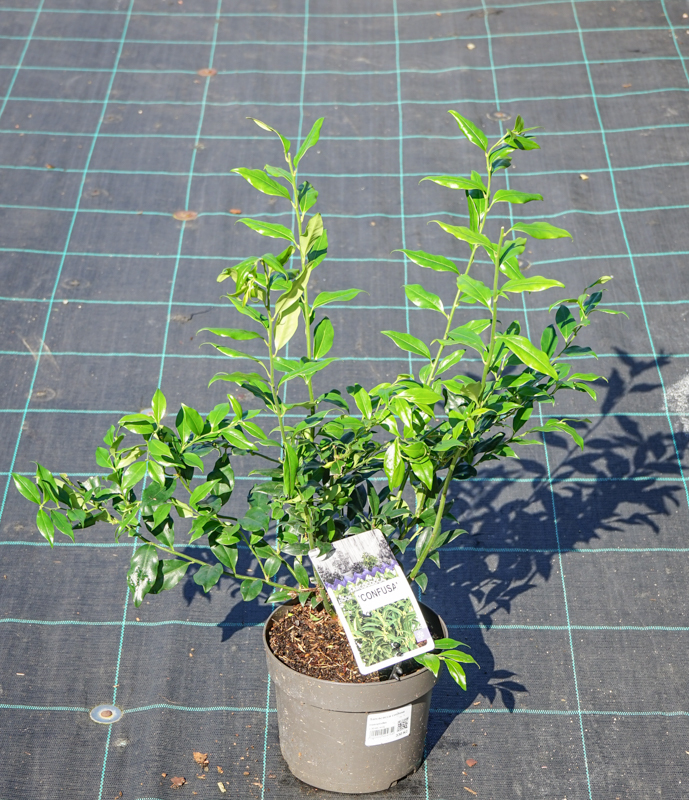
280,5 Kè
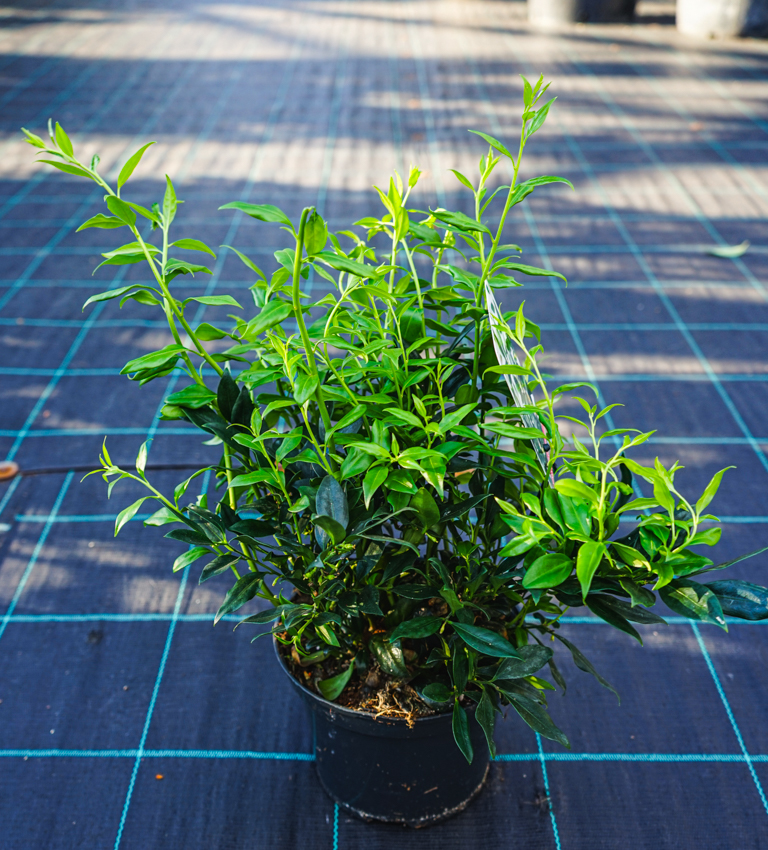
331,5 Kè

331,5 Kè
Goods are shipped all over Europe. For Russia and U.K. and for further details please read about SHIPPING OPTIONS HERE.
Are you interested in a serious discount for orders NOV-FEB? Check your options here.
THE PRICES INCLUDE VAT of 15%. For quick conversion you can use 1 CZK = approx. 0.04 EUR
- STANDARD QUALITY - Plants of this group are 1st class quality with number of branches and overall density adequate to their size and age, considering they were container grown.
- DE LUXE QUALITY - This label guarantees a luxurious quality of manually selected plants that, compared to their height and age, are exceptionally dense and beautiful.
- EXTRA - These plants are usually mature and bigger specimens with exceptional overall appearance.
- STANDARD (as described in the plant form) means a tree with a trunk of 190-210 cm and a crown at the top, unless specified differently. The commercial size for trees is their girth measured in the height of 1m from ground.
- HOBBY - These plants are of the same quality as our standard-quality plants but younger and therefore cheaper.
- SHRUB - a woody plant with branches growing bushy from the ground level.
- HALF-STANDARD or MINI-STANDARD - a small tree with shorter trunk, its size is usually specified.
- FEATHERED - These are trees with branches growing already from the base of the trunk and up along the stem.
- GRASSES and PERENNIALS - Sizes given usually read the diameter of the pot or the clump, as specified.

































